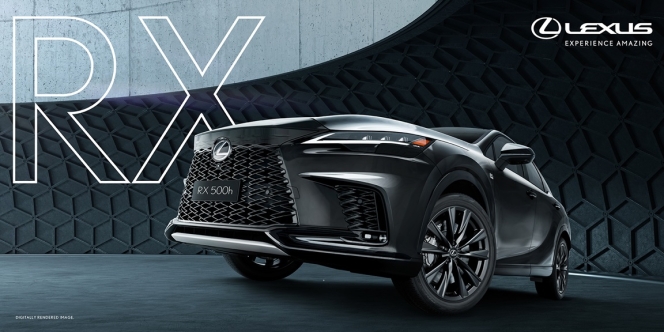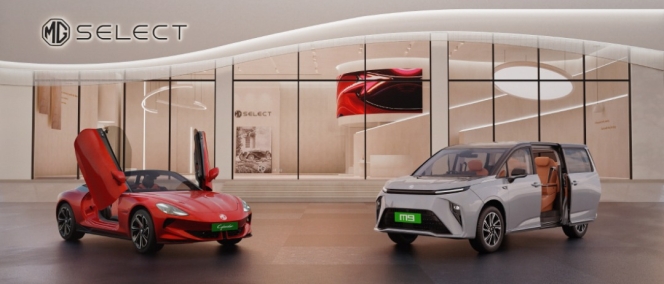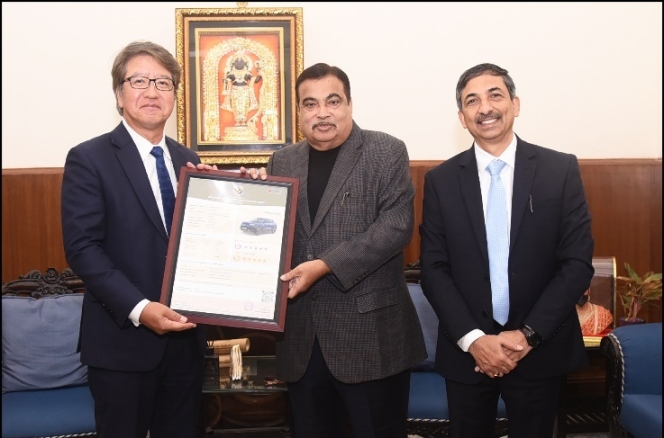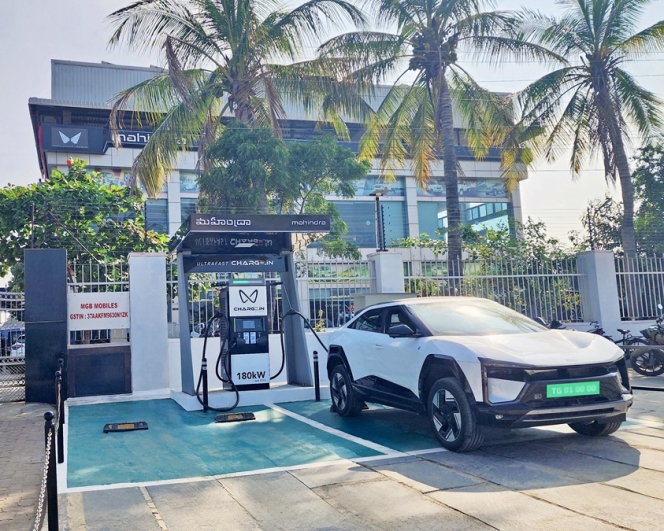In 2019 It Was Three-pointed Star For Mercedes-Benz India
- By 0
- December 21, 2021

By T Murrali
Crossing very significant milestones and achieving stellar sales performance made 2019 very special for Mercedes-Benz in India. The German car maker celebrated 25 years of operations of its local entity Mercedes-Benz India that began with a local assembly facility based at the Tata Motors (then TELCO) premises, and the tenth anniversary of the independent Mercedes-Benz plant in Pune.
 The year was also record-making for the company in defying the slowdown and selling more than 600 cars within a week during the festive season of 2019 bucking the automotive slowdown in the country since September 2018. This was over and above its outstanding sales performance a month ago when it delivered more than 200 cars in Maharashtra, especially in Mumbai, and Gujarat. It has also sold off the current GLE models about three months ahead of plan and has opened bookings for the upcoming new generation GLE scheduled to be launched before the Auto Expo 2020.
The year was also record-making for the company in defying the slowdown and selling more than 600 cars within a week during the festive season of 2019 bucking the automotive slowdown in the country since September 2018. This was over and above its outstanding sales performance a month ago when it delivered more than 200 cars in Maharashtra, especially in Mumbai, and Gujarat. It has also sold off the current GLE models about three months ahead of plan and has opened bookings for the upcoming new generation GLE scheduled to be launched before the Auto Expo 2020.
Mercedes-Benz India sold more than 10,500 units till October 2019. The year 2018 was the best ever as it sold 15,538 units with 1.4 percent growth over the previous year. It was the second year in a row that the company crossed sales of 15,000 units. In 2019 the company recorded its highest ever Q4 selling 3,871 units, thus registering a 3.3 percent y-o-y growth for Q4, and was able to achieve sales growth in a challenging market. Amidst strong macro-economic headwinds, Mercedes-Benz India sales volumes in Q4 also grew by 15.41 percent from Q3 2019 and the overall sales volume remained at 13,786 units from January-December 2019.
With its slogan ‘Best Never Rest’ the company carries forward the rich learning and experiences of the past 25 years to embark on a new journey towards reinventing itself for the future. As the inventors of automobile globally, Mercedes-Benz is highly confident of leading the luxury automotive industry which it pioneered in India, by not resting on past laurels and accolades but by striving to achieve excellence in the future.
The company’s factory in Pune makes nine different models including the sedans of the C-Class, E-Class, S-Class and CLA Coupé as well as Maybach S-Class and the SUVs GLA, GLC, GLE and GLS. The plant in India has been one of the first local assemblies of Mercedes-Benz to implement Virtual Reality technology, starting with the body shop training. As the implementation of Virtual Reality in the training process of the Indian plant has been a huge success, it is being implemented in other Mercedes-Benz assemblies around the world.
 The Managing Director and CEO of Mercedes-Benz India, Martin Schwenk, is very upbeat about the future course of the company. When told that he is the only car company CEO in India to have roaring sales, he told this publication that the festive season had been satisfactory for the company as it saw overwhelming response to its products from across markets. This has made him even more confident. He said his company’s plans would be well implemented, especially to launch new products; it was obvious that he was being both practical and optimistic.
The Managing Director and CEO of Mercedes-Benz India, Martin Schwenk, is very upbeat about the future course of the company. When told that he is the only car company CEO in India to have roaring sales, he told this publication that the festive season had been satisfactory for the company as it saw overwhelming response to its products from across markets. This has made him even more confident. He said his company’s plans would be well implemented, especially to launch new products; it was obvious that he was being both practical and optimistic.
During a recent interaction Schwenk said that the company works with its dealers to see how it can increase their profitability by looking into their inventory and stock levels, using its product offerings and ‘wish-box’ initiatives to raise the numbers. But about the order book position he said that “it is business as usual.”
On Growth Track
From the overall sentiment among customers and the availability of finance in the market Schwenk expects the industry to grow again. “I can see, when I follow numbers, that everyone is carefully and prudently managing the situation. Inventory management is taking up a big portion of every OEM’s activity. The BS-IV to BS-VI change will create some kind of distortion. Bigger the distortion, bigger will be the inventories at that point in time. Retail numbers being higher than wholesale makes me believe that the market is getting more receptive now. If there is good awareness among all, we can move forward as an industry. Turbulence will be there but it should not be a major irritation. From the second half of 2020 this transition period will be over and we would probably see a normal growth scenario. Until then the market might behave in a way that is hard to assess depending on inventory levels, pricing, discounting and whatever is necessary. I would expect some distortion where we won’t be able to easily ascertain the natural growth momentum. But with the efforts taken by Government and industry we could expect things coming back to normal soon.”
On the transition to BS-VI he said, “Our change from BS-IV to VI usually goes with new models. We have a strategy which is basically built on major model upgrades and new models. That’s why our transition started with the S-class (last year) where we had a new model with all the technology and features in it. For our brand I don’t expect any pre-or-post-buy triggered by BS replacement.”
The V-class Elite was launched in 90 countries. In India the company registered three-digit sales of its V-class and he is happy with the growing demand though the volumes are very low. “Every time we start something fresh we are keen to ensure it gets adequate returns. We try to upgrade based on what the customers tell us. The V-class does give an element of luxury; you will feel the difference when you sit in it. We are happy that we were able to open a segment where nobody had been before.”
The fact that the V-class is in 90 countries shows that it has developed well. This model, unlike its predecessors, is very much a passenger car, almost like an SUV. This has boosted sales in many markets. The global company has seen substantially higher numbers than expected, in most of the markets, he said.
The model launched in India is the same as the model Mercedes-Benz sells in other markets. It is totally imported but it is configured according to what a particular market needs and the prospective customer demand. “We have used all the feedback generated to create an offering that fits very well in the market here. The pricing of the upper-end V-class range goes up from INR 68 lakh to INR 1.1 crore. That is a wide span where you have the V-class for many different purposes in that series.”
Schwenk said the economic slowdown has definitely impacted his company with the entire industry slowing down by at least 20 percent. “We don’t have full transparency as not many manufacturers are disclosing their numbers. It’s not always easy for us to estimate what the market is doing but we believe the luxury market is down by 15 to 20 percent. However, we have maintained our market share of 40 percent in the luxury segment.”
On the customer preference for diesel vis-a-vis petrol, he said it has not triggered too much of a question. “What the customers expect is that we give them the latest technology in any engine and meet the highest standards available. Customers are not too concerned about whether we go for BS-IV or BS-VI. They are more bothered about the features in the car, the styling, design and, of course, the price. In the smaller segment we do get questions on the type of engine used, petrol or diesel. Our diesel share is unchanged in the larger SUVs and bigger sedans. Our diesel engines are highly efficient; they not only follow BS-VI norms but also are 20 percent more fuel efficient and better in CO2 emissions. If you look at the whole mix, diesel does come out as a clean fuel with the introduction of BS-VI.”
However, not all models are uniform in giving fuel efficiency; it varies from model to model. In the E-Class vehicles, engine fuel efficiency in diesel would be more by 15-20 percent. It meets all the BS-VI norms; NOX and carbon emissions are much reduced. It is very competitive with the petrol engine.
Electric Vehicles
About electric vehicle (EV) he said, “We would also develop EVs; we have already made slow entries into the market but I think we are still in the early phase of seeing what the right set-up is for the electric. From a framework and infrastructure perspective there is still some work to be done while from the customer demand angle it is not really hot. But the electric trend will certainly grow.”
“Our company has quite a few cars lined up at the global level; by 2022 we will have 10 pure electric vehicles worldwide. We would also have plug-in hybrids that we consider specifically for countries like India with about 20 models coming within the next two years. Electric will definitely have its space though we have not introduced any model in India. Based on our global portfolio and how the market develops here we would take a call on this. We are not in a rush because there should be the right momentum to get it on the road. Considering our overall strategy for 2019 we have decided to begin with connectivity as Indians are very much into their mobile devices. That’s why ‘Mercedes Me Connect’ was launched, which connects not only the new cars but also cars that go back to 2007,” Schwenk said. (MT)
Lexus India Launches New RX350h Exquisite Grade At INR 8.99 Million
- By MT Bureau
- December 03, 2025

Japanese luxury brand Lexus India has introduced a new ‘Exquisite’ grade to its RX 350h line-up, strengthening the model’s presence in the luxury SUV segment.
The new RX 350h Exquisite grade starts at INR 8.99 million (ex-showroom), which goes up to INR 10.09 million (ex-showroom).
The RX 350h Exquisite grade features Lexus’ hybrid system, which combines a highly efficient 2.5-litre inline 4-cylinder engine and high-output motor. It includes a bipolar nickel-metal hydride battery with enhanced performance. On the inside, it gets 10-way power adjusted front seats, heated and ventilated seating for front & rear seats and ambient lighting.
The RX 500h F-SPORT grade is the only Performance Hybrid Electric Turbocharged Luxury SUV in India. The 2.4 L-T HEV on the RX 500h features a front unit integrating a 2.4-L turbocharged engine, motor, a 6-speed automatic transmission and an eAxle with a built-in high output motor driving the rear wheels. The RX 500h features Dynamic Rear-Wheel Steering and DIRECT4 technology for acceleration.
The RX features a Mark Levinson 21-speaker audio system and offers Lexus Safety System+ with Dynamic Radar Cruise Control, Cross Traffic Alert and Safe Exit Assist with Blind Spot Monitor.
Between January and November this year, the RX model recorded 12 percent growth, reflecting rising demand for luxury SUVs in the country. During the same period, SUVs contributed about 40 percent to Lexus India’s overall performance, underscoring the RX’s pivotal role in driving the brand’s momentum.
Hikaru Ikeuchi, President, Lexus India, said, ‘The Lexus RX represents our dedication to luxury, design, performance, and sustainable mobility. As the luxury SUV segment continues to grow, the introduction of the new Exquisite grade allows us to offer guests a wider range of options and features to choose from. This enhancement reflects our continued commitment to expanding our portfolio and elevating the Lexus experience in India, supported by advanced technology and a guest-first philosophy.”
MG SELECT Crosses 1,000 Sales And 15 Experience Centres
- By MT Bureau
- December 03, 2025

JSW MG Motor India has announced that its luxury retail channel, MG SELECT, has crossed a triple milestone: reaching 1,000-unit sales, inaugurating its 15th Experience Centre and maintaining the second position in India’s luxury EV market.
The network now encompasses 15 Experience Centres across 14 cities in India, reinforcing the brand's commitment to delivering an exclusive automotive retail journey. The recent inauguration of the 15th store in Jaipur further underscores the brand's ambition to redefine luxury mobility.
The milestone also highlighted sustained market demand for the select portfolio and is a key driver behind the brand’s 32 percent YTD growth in 2025.
The company claimed that the MG Cyberster, India's highest-selling sports car, has a 4–5 month waiting period, and the MG M9 - Presidential Limousine shows strong momentum in the luxury MPV segment. The MG Cyberster is available at an ex-showroom price of INR 7.49 million, while the MG M9 is available at an ex-showroom price of INR 6.99 million.
Anurag Mehrotra, Managing Director, JSW MG Motor India, said, "Our rise to become the second largest luxury EV brand in the country speaks to a singular belief. True luxury is felt in every touchpoint when precision, ambition and care move together. Through MG SELECT we have crafted an ownership world where innovation meets desire and where every interaction feels intentional. We are shaping the next era of electric mobility for India’s most discerning customers, with a commitment that is both bold and deeply personal.”
The MG SELECT Experience Centres are spaces for the brand's flagship vehicles. These venues provide an immersive, gallery-like setting, ensuring the display of these models is the focal point of the customer interaction. The Jaipur showroom, located at Tonk Road near Sanganer Flyover, exemplifies the MG SELECT philosophy of ‘Reimagining Luxury’, featuring spacious, serene, and technologically advanced environments that elevate the car buying journey.
Maruti Suzuki e Vitara Gets 5-Star Bharat NCAP Safety Rating
- By MT Bureau
- December 02, 2025

Maruti Suzuki India has been awarded a 5-star Bharat NCAP safety rating for its e Vitara, marking a moment for the company's electric vehicle strategy.
The e Vitara is built on Suzuki’s Heartect-e platform designed for electric vehicles to deliver strength, structural rigidity and advanced high voltage protection. The ‘Made-in-India, Made-for-the-World’ e Vitara is designed and tested for temperature conditions across the world, ensuring performance from as high as 60deg Celsius to as low as -30deg Celsius. The model is offered with 49 kWh and 61 kWh battery options.
Nitin Gadkari, Minister of Road Transport and Highways of India, said, “Congratulations to Maruti Suzuki for achieving 5-star Bharat NCAP in both adult and child occupant protection for their e Vitara. I am especially glad that Maruti Suzuki has shown real leadership in providing 7 airbags as a standard across all variants of the e Vitara.”
Hisashi Takeuchi, Managing Director & CEO, Maruti Suzuki India, said, “The 5-star Bharat NCAP rating for e Vitara, our first Battery Electric Vehicle, is a moment of immense pride for all of us at Maruti Suzuki. Using the Bharat NCAP 5-star rating, we will export the e Vitara to more than 100 countries of the world. Bharat NCAP’s globally benchmarked stringent vehicle test protocols have been a catalyst in empowering customers to make informed decisions. I thank the Minister Gadkari, the officials in his Ministry and test agencies for their rigorous efforts and commitment in shaping India’s journey towards safe mobility.”
The e VITARA’s body structure uses more than 60 percent ultra-high tensile and high-tensile strength steel. Its battery protection system incorporates a structural design with an energy-absorbing battery pack mounting structure.
Key safety features include 7 standard airbags (including the Driver's knee airbag), Level 2 ADAS (Automatic Emergency Braking, Lane Keep Assist, Adaptive Cruise Control), Hill Hold Control, ABS with EBD and Brake Assist, Electronic Stability Program (ESP) and a 360-degree Surround View Camera.
Mahindra Launches First Dealership-Based Ultrafast EV Charger In Anantapur
- By MT Bureau
- December 02, 2025

Mahindra has marked a major milestone in its nationwide electric vehicle (EV) infrastructure expansion with the inauguration of its first dealership-based ultrafast charger – a 180 kW Charge_IN station.
This is the first of many such installations planned across Mahindra dealerships, forming a key pillar of the company’s commitment to building India’s ultrafast charging network.
This initiative scales up Mahindra’s Charge_IN ecosystem, complementing the 250 highway fast-charging stations already announced. The new 180 kW ultrafast chargers will enable EV users to charge quickly and conveniently at strategically located dealerships across the country, with 24x7 on-ground support.






Comments (0)
ADD COMMENT